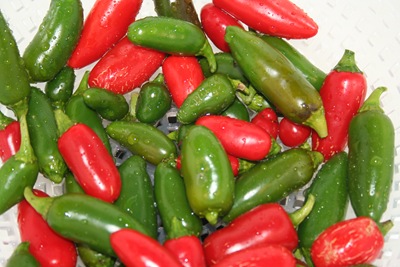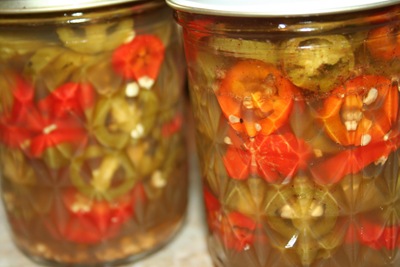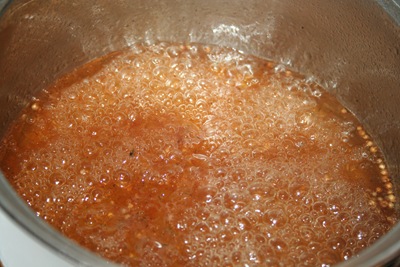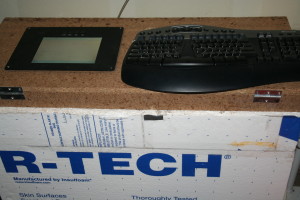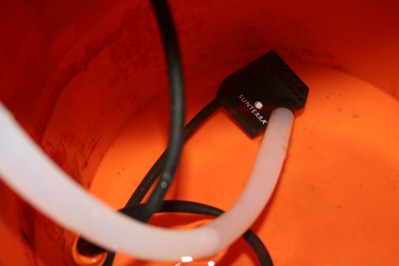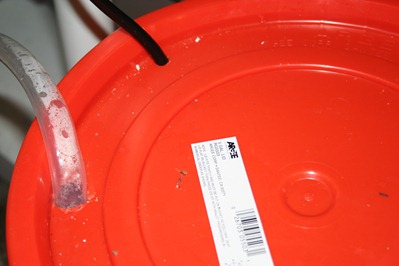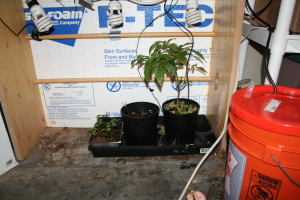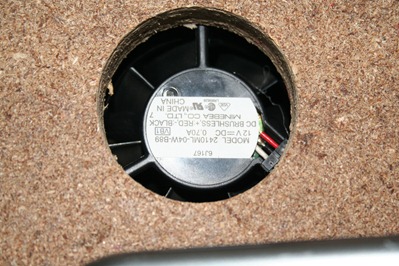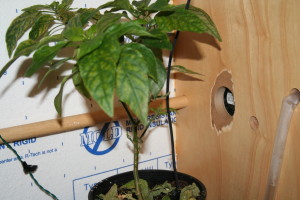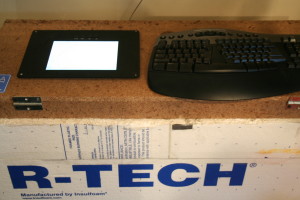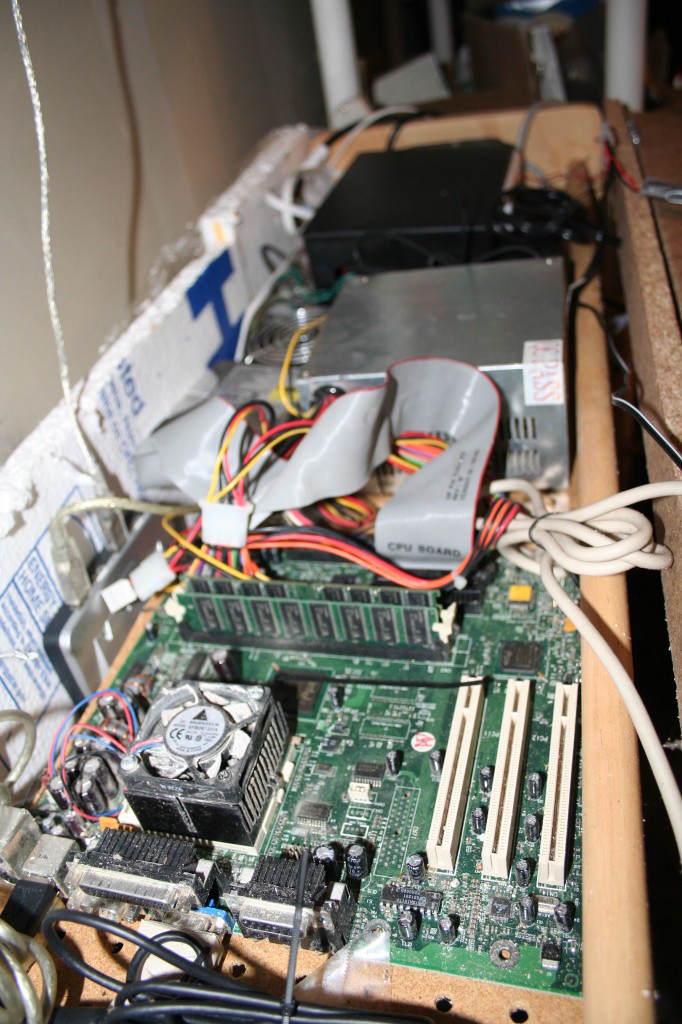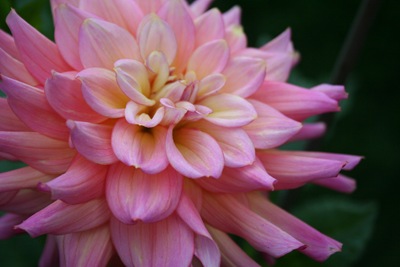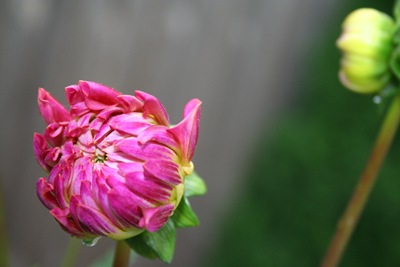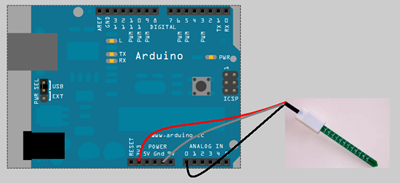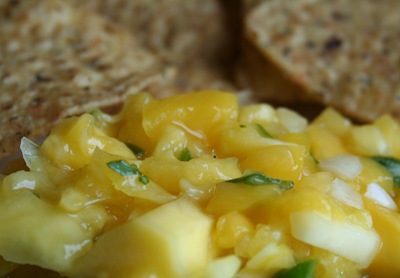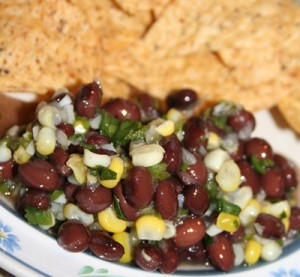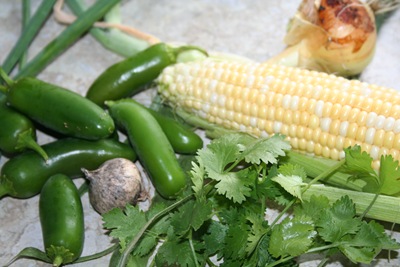Pickled jalapeno peppers
14.6 years ago jalapeno, peppers, recipe
My jalapeno peppers did great this year. So good I didn’t really know what to do with all of them. After making some salsa and having several mature red ones as snacks in the garden, I still have about two pounds that I didn’t want to go to waste. After a little thought I decided to make some pickled jalapeno peppers.
CVG Picked jalapeno pepper recipe
Directions: Mix ingredients and bring brine to boil. Either slice or leave the pepper whole. If you choose to do whole peppers, be sure to poke them with a toothpick so they won’t collapse. Fill jars with jalapeno peppers and then fill with hot brine up to 1/2 in from the top of jar. Boil for 10 minutes and feel free to pick some pickled peppers as fast and as many times as you want this summer.
Tags: garden seeds, led, pepper plants, salsa garden
Computer controlled grow box – Part 2
14.6 years ago indoor growbox, water
Though I have made some significant changes to the grow box controller, the actual grow box has undergone some minor but important changes over the past few months.
Automated watering
Now I must say this one is pretty darn simple. Though I will be planning on a slightly more complicated hydroponic setup later I decided to start with a very easy bottom watering technique. Just take a regular old fountain pump (I went with the cheapest I could find) drop it in a 5 gallon bucket of water and attach a hose long enough to reach your planting tray and plug in the power to the pump to your grow box controller and that’s about it.
To prevent evaporation and algae and little bugs making a home in my nice bucket of water, I added a lid with two holes for the water output and power input. The power input required me to make a straight cut with a utility knife to ensure a snug fit while not requiring me to cur the AC line to feed the wire through.
I also cut a hole of the same size as the water output on the bucket lid to the grow box to allow the line to enter while still keeping the box closed.
Exhaust fan control
Air circulation is important for plants to be healthy but when the box gets warmer than expected I installed two controlled CPU fans to help regulate temperate as well as one static fan that constantly pushes air from the top to bottom.
I added a 12 volt exhaust fan to the top of the box (pictured above) to help push hot air out of the grow box with another (pictured below) at the lower part of the grow box to push in cold air as needed. Both of these fans are powered by a 12 volt power wall adapter plugged into the grow box controller.
Heating
Though the computer and lights allow the box to create a comfortable internal temperature, sometimes it needs a little help. For this I installed a regular old seedling heater to hopefully take a little sting out of the cold floor the seed tray is sitting one. Like other components this was simply plugged into the grow box controller.
Putting it all together
My previous version was a little sloppily put together with duct/packing tape (lets just call it prototyping). Though this added some hackiness appear it wasn’t too functional so I added a little strip of wood to support a couple hinges which I created a top which holds the LCD panel.
Upon opening the top you can see the grow box controller and the state of the art 600 MHz PC in all their glory.
As you can see I have still have some cleaning up to do with compress air and maybe a few more zip ties but all in all everything seems to have come together nicely.
Tags: cheap, garden seeds, grow lights, growbox, led, outdoor plants, vegetables
Late bloomers
14.7 years ago fall crops
Last February my 7-year-old daughter and I attended the Northwest Flower and Garden show for the first time, which is back on next year if you haven’t yet heard the good news. During our visit my daughter purchased a single dahlia tuber from Swan Island Dahlias.
We carefully followed the detailed planting instructions and it grew to about 5 feet by the end of the summer, though there were no blooms emerging. With Fall coming upon us we both were getting a little worried we wouldn’t see anything this year. Fortunately the plant finally started sharing some late blooms while the rest of our garden is more in the dying off state.
Tags: led, outdoor plants
How to use Vegetronix soil moisture sensor (VG400) on Arduino
14.7 years ago arduino, moisture sensor
With the summer starting to come to a close it has been time for me to start thinking back to the computerized grow box. I have been doing some considerable work on the electronics and software over the summer. Better to break stuff while the plants are outside and not while killing them inside.
Though I have been happy with my homemade gypsum soil sensors I decided to try out a commercial option hoping for better accuracy and longer life. This is important with my current plans to include automatic watering to the latest version of my grow box. Don’t want to wake up to a flood in the garage due to a broken sensor. After some looking I came across the Vegetronix VG400 which measures the dielectric constant of the soil using transmission line techniques. Which I have no idea what that means but sounds impressive.
The hookup couldn’t be simpler, red wire to 3V, bare wire to ground, and black wire to an analog input. As you can see below in my completely not to scale diagram below.
From here it all comes down to some simple code to write on the Arduino to get some values.
| void setup() { // Setup serial Serial.begin(9600); }void loop() { Serial.println(analogRead(0)); delay(200); // wait 200 milliseconds |
Upload the code to the Arduino and now I can get a moisture value from the analog input between 0 and 614 (0-3 volts) depending on the degree of water saturation.
Though not as hacky as my PS2 controller moisture sensor solution definitely more elegant and reliable. Stay tuned for more details of other improvements to the computer controlled grow box.
Tags: arduino, cheap, growbox, led, outdoor plants, vegetables
Mango Salsa Recipe
I am starting to get some cherry tomatoes turning red but not enough to make salsa so yet again so I decided to make some Mango Salsa. It is great to eat on tortilla chips the same you would for regular salsa or black bean corn salsa. One of my favorite things to do with is as a topping to blackened salmon (salmon grilled with dusting of Cajun seasoning)
CVG Mango Salsa Recipe
- 3 mangos
- 2 cloves garlic
- 1 small onion
- green onion
- 5 sprigs of cilantro
- juice of one lemon (or lime)
- 1 jalapeno pepper (seeded)
- sugar
Directions: Finely chop 1 mango (or blend in blender/food processor) this will create a base for the salsa. Coarsely chop remaining mangos, onion, and green onions to have more defined texture and add to bowl. Finely chop garlic, cilantro, and seeded jalapeno pepper and add to mixture. Squeeze in juice of lemon into bowl and mix thoroughly. Let sit for 10 minutes and add sugar until salsa does not have a spicy aftertaste (normally 2-3 teaspoons)
Now if you really like the spice you can leave the seeds in and/or skip the sugar but for the blackened salmon it give a good contrast to the spicy meat and people just are not usually expecting fruit to be spicy.
I can proudly say with the exception of mangos, lemons, and sugar the remaining ingredients came right out of my garden.
Tags: cheap, cilantro, garden seeds, garlic bulbs, led, pepper plants, salsa garden, tomato plants, vegetables
Black Bean and Corn Salsa Recipe
14.8 years ago corn, peppers, recipe, salsa
My jalapeños peppers have been growing like crazy and I have had to start harvest to prevent the plants from stop producing. Given my tomatoes are still green I have been itching to do something with them, I decided to make some corn salsa. Given I couldn’t find a recipe that matched the ingredients I had on hand I decided to make my own.
CVG Black Bean and Corn Salsa Recipe
- 2 ears of corn (1-1/2 cups frozen corn)
- 1 small onion (chopped)
- 1/4 cup chopped cilantro
- 1/4 cup sliced green onions
- 2-3 cloves of garlic (chopped)
- 1/4 cup white vinegar
- 3 T sugar
- 1 chopped seeded jalapeño
- 1 chopped unseeded jalapeño
- 1-1/2 cups black beans (canned)
Directions: Cook corn for 2 minutes in boiling water and submerge in ice cold ice water. This helps stop the corn from cooking any more and also make handling while cutting the kernels a little more pleasant. Cut off kernels and add to bowl. Chop/slice remaining ingredients and add to bowl, stir, and refrigerate and serve chilled.
If you like your salsa a little spicier leave both pepper seeded.
Tags: cilantro, garden seeds, garlic bulbs, led, outdoor plants, pepper plants, salsa garden, tomato plants
